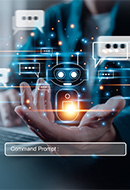Evolution of the world population
The changing world population and its impact on the future of the planet
A study published in 2020 by the prestigious journal 'The Lancet' directly contradicted the forecasts being made by the United Nations (UN) about the future population of the world. At the time, the UN was predicting that there would be 11.2 billion people on the planet by the year 2100. 'The Lancet', meanwhile, reasoned that the global population would peak in 2060 and then fall to 8.8 billion by 2100 thanks to improvements in education for women and better access to contraception.

Four years later, and the UN has revised its projections and has partly come around to The Lancet’s estimations. In its report World Population Prospects 2024, which was published in July of that year, the UN predicted that the world’s population would peak in the mid-2080s. According to these new projections, the global population is expected to grow from the 8.2 billion recorded in 2024 to around 10.3 billion by the mid-2080s, followed by a slight decline to 10.2 billion by 2100. Just a decade ago, the UN projected that by the end of the century, there would be 700 million more people than now.
Historical growth of the world population
Before we examine current trends and projections for population growth, it is worth considering its causes. The world’s population has grown by more than three times since the mid-20th century, from an estimated 2.5 billion people in 1950 to the current 8.2 billion. But history shows that the evolution of the world's population has not always followed this current dizzying pace. In particular, two historical moments marked this evolution of the global population:
- On one hand, the Neolithic Revolution, which took place between 10,000 and 8,000 BC, marked a decisive shift in human history. During this period, humans began mastering agriculture and animal domestication, which enabled the settling of communities and freed up labour for activities such as craftsmanship. These advancements spurred significant population growth, raising the global population to approximately 300 million people.
- On the other hand, the Industrial Revolution (1760–1840) triggered an unprecedented population boom. During the 19th century, innovations such as steel manufacturing, mass production, assembly lines and electrical networks transformed economies and societies. As a result, the global population doubled during that century and tripled in the 20th century, reaching six billion people by the year 2000. This exponential growth was driven by medical, scientific, and economic advancements that improved living conditions and reduced mortality rates.
In 2011, the world's population reached a new milestone of seven billion people, and then just 11 years later the UN designated 15 November, 2022 as the approximate day when the figure reached eight billion. As of 2024, the world’s population stood at 8.2 billion according to the UN.
World population prospects 2024
- 2024 8.2B
- Mid-2080s 10.3B
- 2100 10.2B
Eastern & South-Eastern Asia
Central & Southern Asia
Sub-Saharan Africa
Europe & Northern America
Latin America & the Caribbean
Northern Africa & Western Asia
Oceania
- 0
- 500M
- 1B
- 1.5B
- 2B
- 2.5B
- 3B
- 2024
- 2080
- 2100
Source: UN News / Global perspective Human stories
 SEE INFOGRAPHIC: World population prospects 2024 [PDF]
SEE INFOGRAPHIC: World population prospects 2024 [PDF]
Causes of population growth
World population growth is marked by three factors, according to the UN:
Projections and trends in the world population
Having established the causes of world population growth, here are some of the projections and trends according to the United Nations.
A peak is approaching. The UN projects that the global population will continue to grow over the next 50 to 60 years, reaching a peak of approximately 10.3 billion people by the mid-2080s. This would represent an increase from the 8.2 billion recorded in 2024. However, it is estimated that by the end of the century, the global population will slightly decline, settling at around 10.2 billion.
In 63 countries and regions, which account for 28% of the world's population, the number of inhabitants has already peaked, according to UN data. Among these countries are China, Germany, Japan and the Russian Federation.
Global fertility rates have fallen. The global fertility rate has experienced a significant decline in recent decades, dropping from 3.3 births per woman in 1990 to 2.3 in 2024. Furthermore, more than half of the world's countries and regions now have fertility rates below 2.1 births per woman. This is the threshold required for a population to maintain its size in the long term, excluding migration.
Life expectancy is on the rise. Global life expectancy has shown steady growth over recent decades. In 1995, it was 64.9 years, rising to 73.3 years in 2024. This figure is projected to increase to 77.4 years by 2054. Although the COVID-19 pandemic caused a decline in life expectancy during 2020 and 2021, it has since recovered to pre-crisis levels.
The future of the most populous countries in the world. India became the world's most populous country in 2023, surpassing China. According to UN estimates, India's population will continue to grow for several decades, exceeding 1.5 billion people by the year 2100. In contrast, China has already reached its population peak and has been experiencing a decline since 2022. It is projected that China's population will fall to 771 million by the end of the century.
The influence of immigration. The movement of peoples from one country to another is expected to be the main driver of future growth in 62 nations from here to 2100, according to the UN’s forecasts. These include Australia, Canada and the United States. Immigration will compensate for falling populations in many territories, as caused by low fertility levels and an ageing population.
An ageing population. The UN projects that by the end of the 2070s, the number of people aged 65 and over will surpass the number of those under 18. This demographic shift will be driven by the continued increase in life expectancy and the reduction in mortality rates observed since the 2010s. This underscores the impact of population aging on future social and economic structures.
Consequences of population growth
Global population growth has positive aspects for the development of society, but it also has negative effects on the planet, putting strains on resources such as food, water and energy, as well as increasing pollution levels and deforestation. Here are some of the most important consequences.
Related stories

History of artificial intelligence
Find out what artificial intelligence is and what it is for.

Eco-neighbourhoods
Citizens are pinning their hopes on eco-neighbourhoods.

Green corridors
Cities are increasingly committed to sustainability.

What is eco-design?
The paradigm of the linear economy no longer makes any sense.

'Green Data'
The application of big data to protect the environment is known as green data.

Smart cities
Sustainable cities are an unstoppable global phenomenon.













